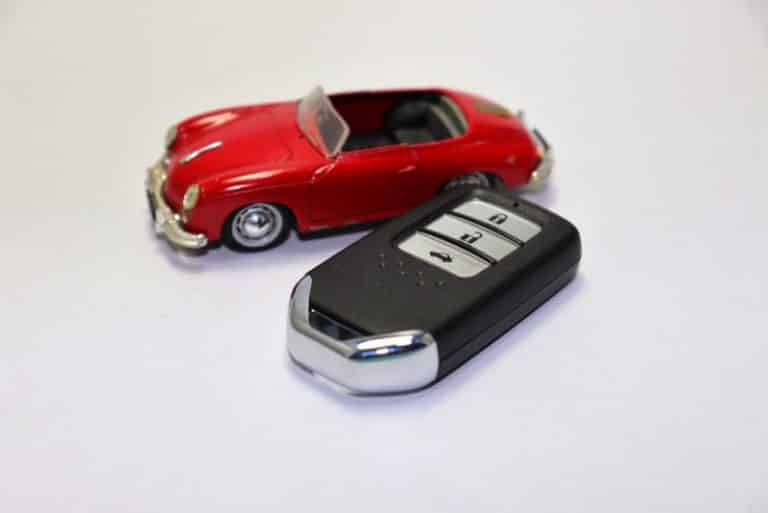Does Honda Use Metric Or Standard? (Let’s See)
Most parts of the world use the metric system of measurement. Hence, it can be confusing when you get a car that uses a system contrary to the regular one you know.
However, the metric system is relatively easy to understand, as this article will explain.
Most Honda uses the metric system. The remnant few would only use standard if manufactured in the United States. Japan, which manufactures Honda, adopted the metric system in 1921. Thus, their vehicles use the metric system of measurement.
Does Honda Use Metric Tools?

Honda uses metric tools; manufacturers design these tools using the metric measurement system.
This design means that the tool’s measurements are in millimeters, centimeters, and meters.
Honda hardly uses standard tools. Although it wouldn’t hurt to have standard tools, you don’t know when you might need them.
Some of the tools Honda uses include;
- A good hammer
- Torque wrench of 10-100 ft-lb: A decent multipurpose wrench is compulsory for torquing lug nuts correctly or building a worthy motor.
- 7/8 inch, 12-inch long chisel: When you have to separate the lower ball joint, you need this together with the hammer.
- Utility knife: A retractable one would be good, so you won’t hurt yourself fumbling around in the toolbox. At one point, you’ll have to cut hoses or wires yourself. A sturdy, sharp knife will be handy for the job.
- 1/4 inch roll-pin punch: This is an excellent implement for the suspension. This tool can remove long bolts that are stubborn and won’t come out.
- Safety glasses: Don’t let something happen to your eyes before you get these glasses.
- Dremel rotary implement: A cordless model will be better since it’s convenient.
- PB Blaster.
- 1/4 inch drive ratchet with 4mm-12mm metric sockets. One can remove Taillights’ nuts with an 8mm deep socket.
- 3/8 inch drive ratchet: The 11-inch long professional type is better than the swivel-head ratchet, which swivels unexpectedly.
- 3/8 inch drive socket sets: Short, deep, or medium. The sizes of the drive socket sets should be 10mm-19mm. Most tasks will require a medium size, while some will need small sizes, and others, the deep sockets.
- 3/8 inch drive extensions.
- 1 /2-inch drive ratchet.
- 1/2 inch drive, 20-inch breaker bar”: This tool, combined with a four-foot pipe, will solve those frustrating axle nuts.
- 1/2 inch drive SAE sockets.
- 1/2 inch drive 32 mm socket.
- 1/2 inch drive extensions.
- 1/2 inch to 3/8 inch adapter.
- A decent screwdriver set: A #2 Philips and 1/8 and 1/4 flat screwdrivers.
- Small and large vice grips set.
- Pliers with bent-nose and long-handle: With this tool, hard-to-reach hose clamps wouldn’t be so hard to reach anymore.
- Small-sized needle nose pliers: These are brilliant for taking out cotter pins.
- A large 12-inch crescent or a comparable wrench that’s adjustable. Fuel pressure controllers usually need big wrenches.
- A decent set of combination wrenches: An 8mm–19mm set.
- Snap-ring pliers: They are suitable for taking out ball joints. You will also require them to mount a short shifter.
- Spark plug socket.
- Feeler gauges – bent: They should have 0.007 inches to 0.011 inches included for fine-tuning valves. The bent ones help in adjusting intake valves. The straight ones don’t work great in tight spaces.
- HondaBond or similar gasket sealer.
- 02 sensor socket.
The following accessories are for those one-time tasks.
- 3/8 inch drive 14mm wobble socket: This will help separate the hindmost transmission mount from the steering rack.
- 3/8 inch drive Phillips-head #2 screwdriver socket: Getting those corroded brake rotor bolts out will need a torque only this tool can provide.
- Gear wrenches: You don’t have to spend the entire day unfastening or tightening. This tool is excellent for tight tasks where visibility is an issue. Purchase a set that has sizes from 10mm to 19mm.
- It would help if you also had a tool to take out the crank pulley fastener. The impact gun and air compressor are suitable for this task.
Sometimes standard and metric tools are interchangeable.
Difference Between Metric And Standard?
Metric measurements are derived from metric units. The metric units are meters, centimeters, millimeters, and kilometers.
On the other hand, the standard usually refers to United State fasteners, which means inches are the form of measuring units.
The main difference between the two is how their respective threads are designated. Standard fasteners fall on either the Unified National Coarse thread (UNC) or Unified National Thread (UNT).
The International Organization for Standardization (ISO) labels metric threads by a pitch in millimeters (mm). Pitch is the distance that is between the crest of two neighboring threads.
The American Society for Testing and Materials (ASTM) fastener criterion measures threads using TPI (Threads Per Inch).
It is done by counting the threads within a one-inch distance.
#1. Screw Sizes Between Metric And Standard
Metric sizes are communicated contrarily to standard sizes. They derive metric screw proportions by major diameter and pitch.
The major diameter is simply the widest diameter the screw has. For instance, let’s assume the major diameter is 5mm.
It will appear as M5 (M standing for metric). If the pitch is 2mm, then the size of the screw is M5 x 2mm.
Now, let’s look at standard screw sizes. For screws measured using inches, consider the minimal major diameter and the TPI.
For instance, a 6/8-12 (coarse) thread signifies that the minimal major diameter is 6/8 inches, the 12 means 12 threads per inch.
How Do You Tell If A Bolt Is SAE Or Metric?
SAE and Metric screws are computed differently with distinct vocabulary.
SAE bolts and nuts are measured using thread count or threads per inch and their length. Conversely, metric fasteners are measured using pitch and length or the space between threads.
Therefore, the two systems are somewhat opposed. The greater the threads per inch in an SAE bolt, the more the threads will be cuddled into a fixed space.
The higher the pitch on Metric bolts, the more the distance across threads. The metric system usually has about four-pitch selections based on utilization.
An impressive quality about metric threads is that they certainly infer distance. Calculated in millimeters, one complete rotation of a screw takes the precise length of the pitch.
This quality makes it simpler for engineers to accommodate in the development process. Can You Import A Honda S660? (Things You Must Know).
Conclusion
Honda uses the metric system of measurement. The tools Honda uses are metrics.
The difference between metric and standard is that they derive metric units from meters, centimeters, millimeters, and kilometers. Standard, on the contrary, is measured in inches.
SAE bolts and nuts are measured using thread count or threads per inch and their length. Conversely, metric fasteners are measured using pitch and length or the space between threads.






